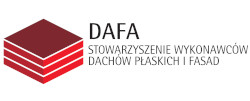Open Access (Artykuł w pliku PDF)
Mechanical performance and structure of hemp concrete exposed to high temperature
prof. dr hab. inż. Elżbieta Horszczaruk, Zachodniopomorski Uniwersytet Technologiczny w Szczecinie, Wydział Budownictwa i Inżynierii Środowiska
ORCID: 0000-0003-0840-5048
mgr inż. Piotr Rychtowski, Zachodniopomorski Uniwersytet Technologiczny w Szczecinie,Wydział Technologii i Inżynierii Chemicznej
ORCID: 0000-0002-7317-3012
prof. dr hab. inż. Paweł Łukowski, Politechnika Warszawska, Wydział Inżynierii Lądowej
ORCID: 0000-0002-4636-1034
Adres do korespondencji: Ten adres pocztowy jest chroniony przed spamowaniem. Aby go zobaczyć, konieczne jest włączenie w przeglądarce obsługi JavaScript.
DOI: 10.15199/33.2023.05.01
Oryginalny artykuł naukowy
Streszczenie. W artykule przedstawiono analizę wpływu wysokiej temperatury na wytrzymałość mechaniczną i strukturę betonów konopnych. Jako kruszywo zastosowano paździerze konopne. Ich udział objętościowy w betonach był stały – współczynnik spoiwo/konopie wynosił 1,3. Betony wykonano przy użyciu trzech różnych spoiw: wapiennego, cementowo-wapiennego i cementowego. Program badawczy obejmował badania wytrzymałości na ściskanie i ubytku masy próbek betonów konopnych po wygrzewaniu w piecu do temperatury 450°C.Wykonano również analizę termograwimetryczną paździerzy i badanych betonów. Wykazano, że wytrzymałość betonów konopnych w temperaturze 450°C i wyższej zależy od zastosowanego spoiwa.
Słowa kluczowe: beton konopny; paździerze konopne; wysoka temperatura; wytrzymałość na ściskanie.
Abstract. The paper presents an analysis of the influence of high temperature on the mechanical strength and structure of hemp concrete. Hemp shives were used as an aggregate. The volumetric content of the hemp shoves in concrete was constant; the binder-to-hemp shives ratio was 1.3. Concrete specimens were prepared using three types of binders: lime, cement-lime and Portland cement. The research program covered testing the concrete’s compressive strength and mass loss after heating up to 450°C. The thermogravimetric analysis of the hemp shives and tested concrete specimens have also been carried out. It has been demonstrated that the hemp concrete’s strength at the temperature up to 450°C depends on the binder used.
Keywords: hemp concrete; hemp shiv; high temperature; compressive strength.
Literatura
[1] Wielgusz K. U prawa konopi włóknistych i oleistych. CentrumDoradztwaTechnicznegowBrwinowie,2020.
[2] Sassoni S,ManziA,MotoriM,MontecchiM,Canti M. Novel sustainable hemp-based composites for application in the building industry: physical, thermal andmechanical characterization. Energy Build. 2014; https://doi.org/10.1016/j.enbuild.2014.03.033.
[3] Diquélou Y, Gourlay E, Arnaud L, Kurek B. Impact of hemp shiv on cement setting and setting: influence of the extracted components from the aggregates and study of the interfaces with the inorganic matrix. CemConcr Compos. 2015; https://doi.org/10.1016/j.cemconcomp. 2014.09.004.
[4] Elfordy S, Lucas F, TancretF, ScudellerY. Goudet L.Mechanical and thermal properties of lime and hemp concrete („hempcrete”) manufactured by a projection process. ConstrBuild Mater. 2008; https://doi.org/10.1016/j.conbuildmat. 2007.07.016.
[5] Glé P, Gourdon E,Arnaud L.Acoustical properties ofmaterialsmade of vegetable particles with several scales of porosity. Appl. Acoust. 2011; https://doi.org/10.1016/j.apacoust. 2010.11.003.
[6] Brzyski P, GładeckiM, RumińskaM, Pietrak K, Kubiś M, Łapka P. Influence of Hemp Shives Size on Hygro-Thermal and Mechanical Properties of a Hemp-Lime Composite. Materials. 2020; https://doi.org/10.3390/ma13235383.
[7] Hirst EAJ, Walker P, Paine KA, Yates T. Characteristics of low-density hemp-limebuilding materials. Proceedings of the Institution of Civil Engineers – ConstructionMaterials. 2012; https://doi. org/10.1680/coma.1000021.
[8] Collet F, Chamoin J, Pretot S, Lanos C. Comparison of the hygric behaviour of three hemp concretes. Energy Build. 2013; https://doi. org/10.1016/j. enbuild. 2013.03.010.
[9] Klementowski I, Pochwała S, Król A. Beton konopny do zastosowania w zrównoważonym budownictwie. MateriałyBudowlane. 2020: 12, 16-17.
[10] Balciunas G, Pundiene I, Boris R, Kairyte A, Zvironaite J, Gargasas J. Long-term curing impact on properties, mineral composition and microstructure of hemp shive-cement composite. Constr Build Mater. 2018; https://doi.org/10.1016/j.conbuildmat. 2018.08.126.
[11] Balciunas G, Pundiene I, Lekunaite-Lukosiune L, Vejelis S, Korjakins A. Impact of hemp shives aggregate mineralization on physical-mechanical properties and structure of composite with cementitious binding material. Ind. Crops Prod. 2015; https://doi.org/10.1016/j.indcrop. 2015.09.011.
[12] Diquéloua Y, Gourlay E, Arnaud L, Kurek B. Influence of binder characteristics on the setting and hardening of hemp lightweight concrete. Constr Build Mater. 2016; https://doi.org/10.1016/j.conbuildmat. 2016.02.138.
[13] Baduge SK,Mendis P, SanNicolasR,NguyenK., HajimohammadiA. Performance of lightweight hemp concretewith alkali-activated cenosphere binders exposed to elevated temperature.ConstrBuildMater. 2019; https://doi.org/10.1016/j.conbuildmat. 2019.07.069.
[14] Gourlay E, Glé P, Marceau S, Foy C, Moscardelli S. Effect of water content on the acoustical and thermal properties of hemp concretes. Constr BuildMater. 2017; https://doi.org/10.1016/j.conbuildmat. 2016.11.018.
[15] PN-EN 13791: 2019. Ocena wytrzymałości betonu na ściskanie w konstrukcjach i prefabrykowanych wyrobach betonowych.
[16] Delhomme F, Prud’hommeE, JulliotC,GuillotT, Amziane S, Marceau S. Effect of hemp on cement hydration:Experimental characterization of the interfacial transition zone. Results in Chemistry. 2022; https://doi.org/10.1016/j.rechem.2022.100440.
[17] RILEM Technical Committees 129-MHT. Test methods formechanical properties of concrete at high temperatures, Part 1: Introduction, Part 2: Stress–strain relation, Part 3: Compressive strength for service and accident conditions. Mater Struct. 1995; 28.
[18] PN-EN 826:2013.Wyroby do izolacji cieplnej w budownictwie – Określanie zachowania przy ściskaniu.
[19] Amziane S, Collet F, Lawrence M. Recommendation of the RILEMTC 236-BBM: Characterisation testing of hemp shiv to determine the initialwater content, water absorption, dry density, particle size distribution and thermal conductivity. Mater Struct. 2017: https://doi.org/10.1617/s11527-017-1029-3.
[20] Le Troedec M, Sedan D, Peyratout C, Bonnet JP, SmithA,GuinebretiereR,GloaguenV,Krausz P. Influence of various chemical treatments on the composition and structure of hemp fibres.Composites: PartA. 2008; https://doi.org/10.1016/j.compositesa. 2007.12.001.
[21] Balcerowiak W. Phase analysis of high-calcium lime by TG. J. Therm. Anal. Calorim. 2000; https://doi.org/10.1023/A:1010168401224.
Przyjęto do druku: 14.04.2023 r.
Materiały Budowlane 05/2023, strona 1-4 (spis treści >>)





























